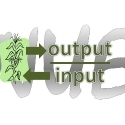02 May 2014
Crop Nutrient Balance - Alberta - Phosphorus
Alberta crop P removals generally have been increasing over the past 40 years, particularly in 2013 (Figure 1). Inputs of P in the form of fertilizer have varied over time. A large fraction of the P excreted as manure is considered non-recoverable, owing mainly to its deposition in pastures and loafing areas. The recoverable fraction however is applied to cropland and comprises a substantial proportion of total P inputs. The manure figures below do not take into account recent increases in the use of reduced-P feeding practices, including the use of phytase in swine and poultry diets. However, increasing use of dried distillers grains (DDGS) from the fuel ethanol industry may have offset reductions in levels of P in livestock diets and manures. The fate of the non-recoverable manure fraction is mostly on pastures, which are not included in the crop removal figures. Crop removal of P from Alberta cropland involves diverse crops (Figure 2). The proportion removed by canola has increased over time. The fraction of manure from hogs and poultry is increasing over time. Since hog and poultry manures are more recoverable, the two sources account for an even greater fraction of recoverable manure (Figure 3).
Note: amounts of phosphorus are expressed as P2O5 - to convert a figure expressed as P2O5 to P, multiply by 0.43.
Figure 1. Phosphorus inputs to cropland include recoverable manure and fertilizer. Removal by harvested crops is shown by the vertical bars. The units are kilograms of P2O5 per hectare of total cropland. Non-recoverable manure is mainly left on pasture, and is not part of the cropland nutrient balance.
Figure 2. Phosphorus removed by harvest of major crops. Stacked areas sum to removal by the listed crops.
Figure 3. Phosphorus in manure, as-excreted and recoverable, from cattle, hogs and poultry.




